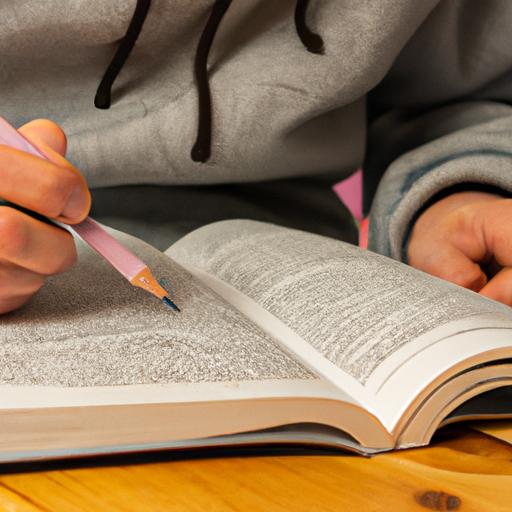Tips and Tricks for Writing an Effective Reaction Paper
Table of Contents
As a student or professional, at some point in your academic or career journey, you may be tasked with writing a reaction paper. This form of academic writing involves analyzing and responding to a specific text, whether it’s an article, book, video, or lecture. Crafting a compelling reaction paper that showcases your critical thinking skills and engages your readers can admittedly be challenging, especially if you’re unfamiliar with the process. However, with the right approach, you can conquer this task and produce an outstanding piece of work. Here are some tips and tricks to help you write an effective reaction paper.
Understanding the Assignment
Before you dive into writing your reaction paper, it’s crucial to grasp the assignment’s requirements. Take the time to carefully read the prompt and identify the purpose and intended audience for your paper. Are you expected to provide a summary, analysis, or evaluation of the text? Consider the format and length requirements, such as the number of pages, font size, and citation style. By understanding the assignment’s demands, you’ll be better equipped to stay focused and avoid common pitfalls.
Reading and Analyzing the Text
To write a strong reaction paper, it’s essential to approach the text with a critical eye. Implement active reading strategies like highlighting, note-taking, and summarizing to identify the author’s main arguments and supporting evidence. Look for key phrases, ideas, and concepts that stand out, striving to connect them to the text’s central theme. Pay attention to the tone, style, and language employed by the author, as these aspects can reveal valuable insights into their intention and perspective. In-depth analysis of the text will provide a solid foundation for developing a strong thesis statement and supporting your arguments with evidence.
Organizing Your Thoughts
Once you’ve thoroughly read and analyzed the text, it’s time to organize your thoughts and ideas. Creating an outline will be your best ally in structuring your arguments and ensuring a logical flow within your reaction paper. Start by drafting a rough outline that includes an introduction, body paragraphs, and a conclusion. In the introduction, provide background information about the text and your overall response to it. Be sure to include a concise thesis statement that encapsulates your primary argument or perspective.
Within the body paragraphs, utilize evidence to support your arguments and address the author’s main points. Each paragraph should focus on a specific idea or point and furnish relevant evidence to substantiate it. Engage the reader by incorporating examples, statistics, and quotes from the text. Ensure that each paragraph is well-organized and transitions smoothly from one idea to the next.
In the conclusion, summarize your main points and reiterate your thesis statement. Take the opportunity to provide final reflections on the text and your reaction to it. Avoid introducing new information or ideas at this stage.
Developing a Strong Thesis Statement
Arguably the most critical component of your reaction paper is the thesis statement. It should be a clear and concise declaration that encapsulates your main argument or perspective. Your thesis statement needs to be specific, focused, and should guide the reader’s understanding of your paper. A well-crafted thesis statement should be supported by evidence from the text and be relevant to the assignment’s requirements.
To develop a robust thesis statement, consider the author’s main arguments and supporting evidence. Reflect on how you can respond to these arguments and what evidence you can employ to bolster your position. Your thesis statement should be debatable and invite discussion and analysis. Once you have formulated your thesis statement, use it as a guide throughout your writing process to maintain focus and coherence.
Writing the Reaction Paper
Once you have a clear understanding of the text and the assignment’s requirements, you can commence writing your reaction paper. The following are key components to include within an effective reaction paper:
Introduction
The introduction serves as the reader’s first impression of your paper and should captivate their attention. Begin with a captivating hook, such as a quote, question, or surprising fact, that relates to the text. Provide context by summarizing the text’s main themes and arguments. Finally, conclude the introduction with a clear and concise thesis statement that summarizes your reaction to the text.
Body Paragraphs
The body paragraphs provide the space to develop your arguments and back them up with evidence. Each paragraph should start with a clear topic sentence that states the main point of that paragraph. Proceed to provide evidence from the text, such as quotes, examples, or statistics, to support your argument. Make a point of explaining how the evidence is relevant to your argument and how it supports your thesis statement. Utilize transition words and phrases to ensure smooth transitions between paragraphs and maintain coherence.
Conclusion
The conclusion serves as the final part of your paper and should succinctly summarize your main points and restate your thesis statement. Begin by restating your thesis statement in a slightly different manner to remind your readers of your main argument. Summarize the key points you made in the body paragraphs and elucidate how they support your thesis statement. Conclude with a strong closing sentence that leaves a lasting impression on your readers.
Editing and Proofreading
Once you’ve finished writing your reaction paper, it is of utmost importance to meticulously edit and proofread it. Here are some tips to help you review your paper effectively:
Reviewing the Content
First, review the content of your paper for clarity and coherence. Ensure that your arguments are well-supported and that your evidence is relevant and convincing. Check that your paragraphs flow logically without any gaps or repetitions. Also, verify that your paper adheres to the assignment’s requirements and that you have addressed all the necessary questions.
Checking for Grammatical Errors and Typos
Second, carefully examine your paper for grammatical errors and typos. Utilize grammar and spell-check tools like Grammarly or Hemingway to identify and rectify errors. Additionally, reading your paper aloud can assist in catching any awkward or unclear sentences. Lastly, seek the input of a friend or colleague for a fresh perspective on your paper.
Revising and Polishing the Final Draft
Finally, revise and polish your paper to make it more compelling and engaging. Incorporate transitions between paragraphs, vary your sentence structures, and utilize vivid language to enhance readability. Ensure that your paper maintains a clear and consistent tone throughout. Once you are satisfied with your final draft, submit it with confidence.
So, armed with these tips and tricks, you’re now well-equipped to tackle the task of writing an effective reaction paper. Happy writing!
Quill And Fox

